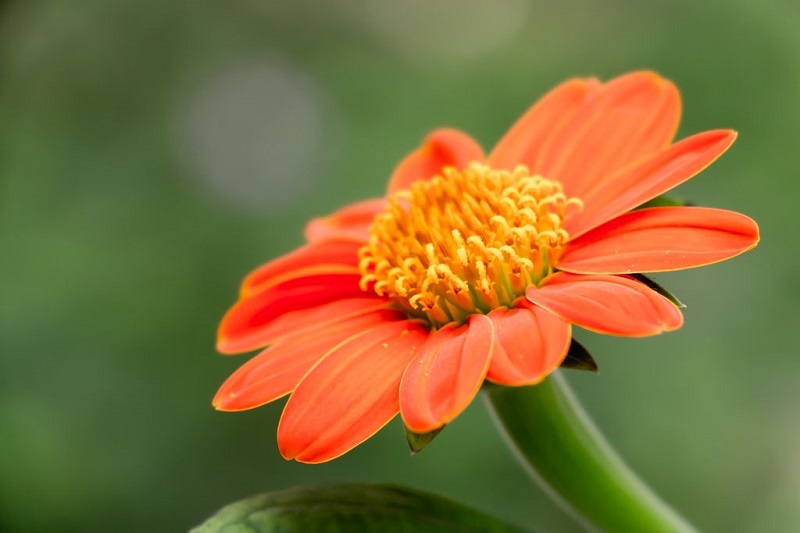
Descriptive technical sheet of the ornamental plant known as Mexican Sunflower, Tithonia rotundifolia. Photographs of the flowers.
Overview of the Mexican Sunflower, Tithonia rotundifolia
Tithonia rotundifolia is a large herbaceous plant originating from Mexico and the Southwest of the United States, widely cultivated in the world as an ornamental. It is an annual species that is frequently used to decorate outdoor gardens due to its large size. This belongs to the Asteraceae family just like the true sunflower ( Helianthus annus ). It is a highly appreciated species for the beauty of the inflorescences and easy cultivation.
This plant is characterized by forming very dense grasses over 2 meters high that are sometimes mistaken for a bush. The main stems become quite thick and even tend to lignify slightly. Each stem emits numerous fully erect branches that allow it to reach large dimensions. All the stems have a conspicuous green coloration and are covered by a dense layer of small whitish filaments.
Leaves
The leaves are large and highly variable on the same plant. They can exceed 20 cm in length and 15 cm in width. There are leaves with a single lobe or with multiple lobes (usually 3). All leaves are petiolate (petioles +/- 6 cm long). The leaf margin is slightly serrated. The coloration of the foliage is dark green.
Flowers
The flowers are arranged in inflorescences called chapters like all the plants of the Asteraceae family. The inflorescences are supported by peduncles +/- 6 cm long and have 1-2 rows of numerous bracts of green (generally not noticeable from the front). They have +/- 10 large ligulate flowers with rounded ends and intense orange color.
The ligules can exceed 2 cm long and 2.5 cm wide. The flowers of the central disk are small with yellow-orange petals. In the central disk, there are female flowers at the edges and hermaphrodites towards the center. The ray flowers are female.
It blooms in the warm seasons of the year (spring-summer).
Fruit
The fruit in this species is achene +/- 0.5 cm long and +/- 0.1 cm wide dark brown. The achenes develop in the disk flowers.
Tips for growing the Mexican Sunflower, Tithonia rotundifolia
Tithonia rotundifolia is easy to keep in the garden, although we must remember that it has a life cycle of +/- 11 months. Every year you have to re-sow because it is an annual plant. Here are your basic care:
Illumination:
It is ideal for growing in bright spaces in the garden because it welcomes a very sunny exposure. Its cultivation in shady places is not recommended as it will flower very poorly and only develop foliage. If it is grown in pots, it should be located in a place where it receives at least 6-8 hours of sun daily.
Temperatures:
Thanks grow in climates where temperatures remain above 24 ° C. Not grow in climates where winter temperatures decrease by 6 ° C.
Substratum:
It grows efficiently in loose soils and is rich in organic matter. It does not tolerate compact substrates that tend to puddle easily.
Irrigation frequency:
Water frequently during warm seasons ( 2-3 times per week ) and 1-2 times every 15 days if the temperature decreases 15 ° C. It is a very well-adapted plant to survive dry seasons.
Pruning:
Pinch the apex of the stems during the early stages of development to encourage branching. More ramifications = More inflorescences.
Plagues and diseases:
It is a resistant species, but it can be affected by whiteflies that lodge on the underside of the leaves. The nematodes attack the root system if used substrates are infested with these parasites. The inflorescences are regularly attacked by mealybugs and aphids.
Parasitic insects can favor the colonization of foliage by pathogenic fungi because they expel a sugary substance that they have on the surface of leaves and stems.
Multiplication:
Being an annual plant, multiplication by seeds is mandatory since the plant generally does not exceed one year of life. The seeds germinate easily if the substrate temperature is higher than 15ºC. Sowing is recommended during the cooler seasons of the year. Too high temperatures suppress seed germination.





